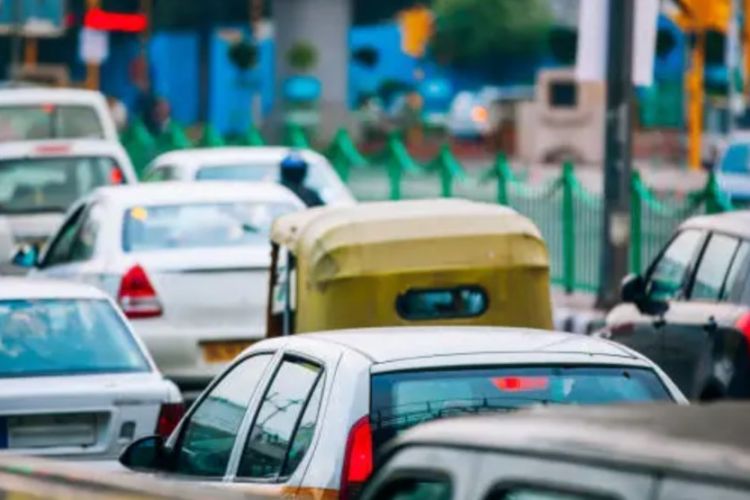
Small car sales crash: Small cars once powered India’s consumption boom. In the mid-2010s, entry-level hatchbacks accounted for nearly half of all passenger vehicles; today they are on the endangered list. Maruti Suzuki chairman RC Bhargava warns the segment must grow 8–10% a year merely to survive after volumes collapsed from almost a million units a decade ago to a fraction of that figure. The implosion matters because budget models such as the Alto, Wagon R and Swift were the middle class’s passport from two wheels to four—and a barometer of upward mobility.
Only about 12% of Indian households—those earning above Rs 12 lakh a year—can realistically buy a car. Even at the budget end, sticker prices have raced ahead of salaries. Each new regulation—stricter emission norms, mandatory airbags, onboard diagnostics—adds Rs 50,000 to Rs 1 lakh to a hatchback’s cost. Taxes do the rest: a small petrol car attracts 28% GST plus up to 3% cess, versus value-added tax of roughly 19% in Europe and 10% in Japan.
READ | Ukraine’s drone attack on Russia redefines global deterrence
Small car sales: Income stagnation meets inflation
Middle-class wages have barely kept pace with inflation over the past decade, while food and housing costs gallop ahead. Households that once set aside savings for a down-payment now lean on credit cards to cover essentials. Consumer-goods majors from Nestlé to Hindustan Unilever and retailers such as Reliance have all reported a “missing middle” in urban demand: premium lines thrive, staples crawl.
Credit has quietly turned into a choke-point. Auto-loan rates that hovered around 7.5% in 2021 now brush 10%, while banks have tightened loan-to-value ratios to protect balance sheets. For a first-time buyer eyeing a Rs 6 lakh hatchback, the monthly EMI has risen by nearly a third in three years—more than enough to tip a household budget already stretched by food and rent inflation. Non-bank lenders, once the lifeline for lower-income borrowers, are retreating after a series of regulatory crack-downs, further thinning the flow of affordable credit to the entry-level segment.
The vacuum is being filled, but not in the way carmakers would like. India’s organised used-car market, led by platforms such as Cars24 and Spinny, sold roughly 5 million vehicles last year—almost double the volume of new passenger cars—and small hatchbacks account for the lion’s share of listings. Prices for a five-year-old Swift now exceed the pre-pandemic sticker of a new one, evidence that demand is bleeding into the second-hand pool. The shift is rational for buyers, yet corrosive for manufacturers: a boom in hand-me-downs cannot replace the production, tax revenue and job creation that come from a healthy pipeline of first-time owners.
SUVs for the rich, two-wheelers for the rest
Shrinking wallets push buyers to the extremes. Sport-utility vehicles—fuelled by easy finance and aspirational marketing—now command roughly two-thirds of passenger-vehicle sales. At the bottom of the pyramid, motorbikes remain the default for 200 million households earning below Rs 5 lakh. Car penetration is stuck at 34 per 1,000 people, less than a tenth of the OECD average, and industry forecasts put passenger-vehicle growth at a tepid 1–4% this year. India’s consumption ladder is losing its middle rungs.
A thriving middle class is not a luxury; it is the flywheel of investment and job creation. When first-time car owners disappear, so do downstream gains for steel, glass, tyres, insurance, retail finance and roadside services. The fiscal maths looks shaky too: high car taxes meant to be progressive now fall disproportionately on would-be buyers of modest vehicles, while the affluent glide away in larger, lower-emission-rated SUVs that enjoy concessional cesses.
A policy course-correction
New Delhi can ill afford to watch the base of its consumption pyramid crumble. Three fixes are obvious:
Rebalance taxation. Calibrate GST slabs to engine size and emissions, not arbitrary length, and phase down the small-car cess for models under 1,200 cc that meet strict pollution norms.
Target affordability. Offer a temporary regulatory-compliance rebate—akin to FAME incentives—for sub-Rs 10 lakh models equipped with mandated safety gear.
Boost disposable incomes. Index personal-tax slabs to inflation, accelerate urban-housing supply to cap rent inflation, and let the forthcoming monetary-policy review put wage growth and core inflation, not headline CPI alone, at centre stage.
India will not achieve developed-economy status on the back of SUVs alone. Restoring the small-car market is shorthand for restoring middle-class confidence. If policymakers act quickly, the Alto can again be a stepping-stone to economic mobility. Otherwise, it risks becoming a museum piece—reminding India of an aspiration that quietly slipped away.
